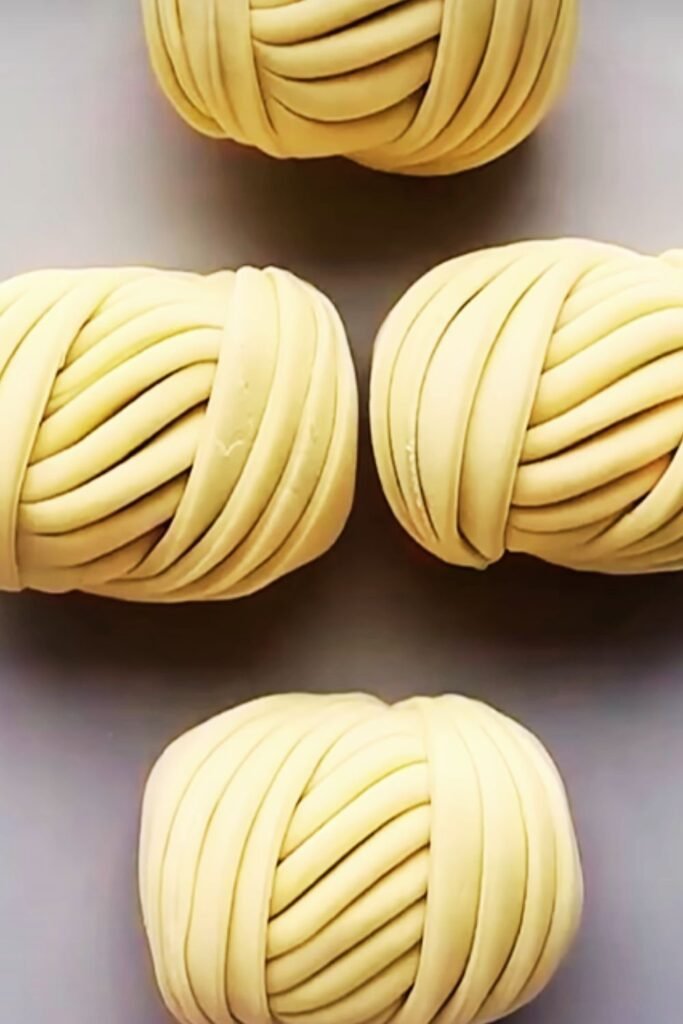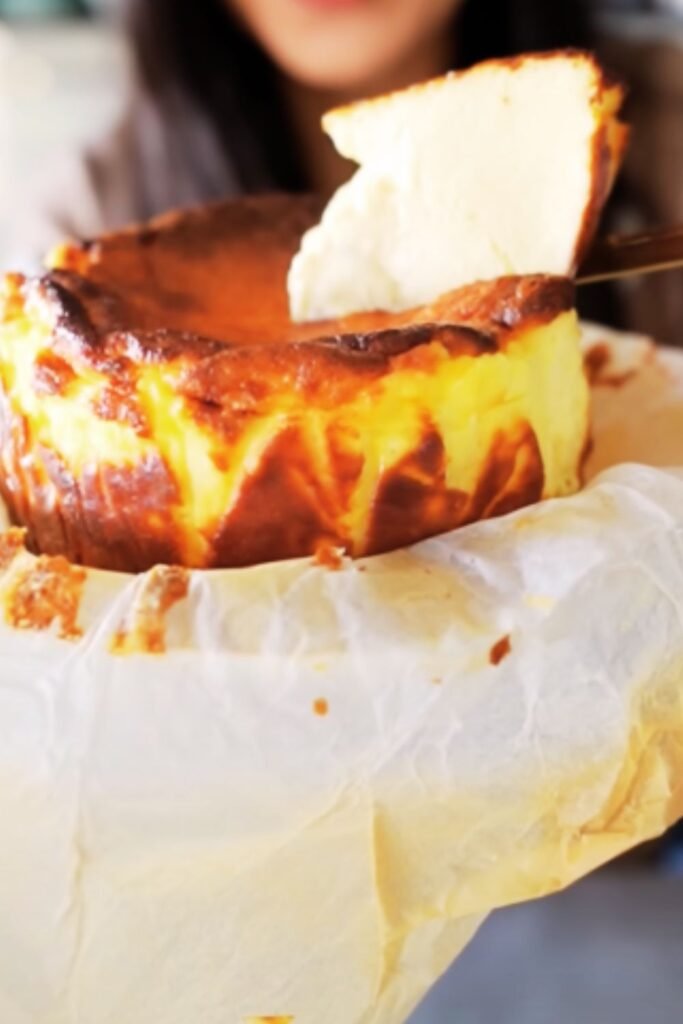I’ve been baking cookies for over fifteen years, and I can confidently say that lemon sugar cookies hold a special place in my heart. There’s something magical about the way these golden treats combine the comforting sweetness of traditional sugar cookies with the bright, zesty punch of fresh lemon. Every time I pull a batch from my oven, the entire kitchen fills with an irresistible aroma that brings back memories of sunny afternoons and family gatherings.
What sets lemon sugar cookies apart from their vanilla counterparts isn’t just the citrus flavor – it’s the perfect balance of textures and tastes that create an unforgettable experience. These cookies offer a tender, slightly chewy center with delicately crisp edges, while the lemon adds a refreshing brightness that prevents them from being overly sweet. I’ve perfected this recipe through countless batches, adjusting ingredients and techniques until I achieved what I consider the ideal lemon sugar cookie.
Understanding the Magic Behind Lemon Sugar Cookies
Butter vs. Oil Debate : While traditional sugar cookies rely heavily on butter for flavor and texture, lemon sugar cookies benefit from a combination approach. I use butter for richness and structure, but adding a small amount of neutral oil creates the perfect tender crumb.
Fresh vs. Bottled Lemon Juice : Fresh lemon juice contains natural oils and compounds that bottled versions simply cannot replicate. The difference in flavor intensity is remarkable – fresh juice provides a clean, bright taste while bottled juice often tastes flat or artificial.
Zest Integration Technique : The secret lies in how you incorporate lemon zest. I rub the zest directly into the sugar before creaming, which releases the essential oils and distributes the flavor evenly throughout every bite.
Chilling Importance : Unlike some cookie doughs that can be baked immediately, lemon sugar cookie dough benefits significantly from chilling. This step prevents spreading, intensifies flavors, and creates the perfect texture contrast.
Essential Ingredients Breakdown
| Ingredient | Purpose | Quality Tips | Measurement Notes |
|---|---|---|---|
| All-Purpose Flour | Structure and body | Use unbleached for better flavor | Level measurements crucial |
| Granulated Sugar | Sweetness and texture | Extra-fine sugar creams better | Reserve some for rolling |
| Brown Sugar | Moisture and chewiness | Light brown preferred | Pack firmly when measuring |
| Unsalted Butter | Flavor and richness | Room temperature is essential | Should indent easily when pressed |
| Large Eggs | Binding and richness | Room temperature for better mixing | Weigh for accuracy if possible |
| Fresh Lemons | Primary flavor source | Choose heavy, thin-skinned lemons | Zest before juicing |
| Baking Powder | Leavening agent | Check expiration date | Aluminum-free preferred |
| Salt | Flavor enhancement | Fine sea salt works best | Balances sweetness perfectly |
| Vanilla Extract | Depth of flavor | Pure extract only | Complements lemon beautifully |

My Perfected Recipe Formula
Ingredients (Makes approximately 36 cookies):
- 2¾ cups all-purpose flour
- 1 teaspoon baking powder
- ½ teaspoon fine sea salt
- 1 cup unsalted butter, room temperature
- ¾ cup granulated sugar (plus extra for rolling)
- ¼ cup light brown sugar, packed
- 1 large egg, room temperature
- 1 large egg yolk, room temperature
- 3 tablespoons fresh lemon juice
- 2 tablespoons fresh lemon zest
- 1 teaspoon pure vanilla extract
- 2 tablespoons vegetable oil
Step-by-Step Instructions:
I always begin by preparing my workspace and gathering all ingredients. This mise en place approach ensures smooth execution and prevents any last-minute scrambling.
Preparation Phase:
- Position racks in upper and lower thirds of oven
- Preheat oven to 350°F (175°C)
- Line baking sheets with parchment paper
- Zest lemons before juicing to prevent waste
Dry Ingredient Assembly: I whisk together flour, baking powder, and salt in a medium bowl, then set aside. This ensures even distribution of leavening agents throughout the flour.
Sugar and Zest Integration: In my stand mixer bowl, I combine granulated sugar with fresh lemon zest, rubbing them together with my fingers. This technique releases the oils from the zest and infuses the sugar with intense lemon flavor.
Creaming Process: Adding room temperature butter to the lemon sugar, I cream on medium speed for 3-4 minutes until the mixture becomes light and fluffy. The color should noticeably lighten, and the texture should increase in volume.
Egg Incorporation: I add the whole egg first, mixing until completely incorporated, followed by the egg yolk. Each addition should be fully mixed before adding the next ingredient.
Liquid Integration: Fresh lemon juice, vanilla extract, and vegetable oil go in next. I mix on low speed just until combined, being careful not to overmix at this stage.
Final Assembly: With the mixer on low speed, I gradually add the flour mixture, mixing just until the dough comes together. Overmixing at this point can result in tough cookies.

Shaping and Baking Perfection
Chilling Strategy:
I wrap the finished dough in plastic wrap and refrigerate for at least 2 hours, though overnight chilling produces even better results. The chilled dough is easier to handle and maintains its shape better during baking.
Shaping Technique:
Using a small cookie scoop or spoons, I portion the dough into 1½-tablespoon portions. Rolling each portion between my palms creates perfectly round balls, which I then roll in granulated sugar for that classic sparkly exterior.
Baking Process:
| Baking Stage | Temperature | Time | Visual Cues |
|---|---|---|---|
| Initial Setup | 350°F (175°C) | – | Oven fully preheated |
| First Batch | 350°F (175°C) | 10-12 minutes | Edges set, centers soft |
| Rotation Point | – | 6 minutes | Rotate pans for even browning |
| Doneness Test | – | 10-12 minutes | Light golden edges |
| Cooling Phase | Room temperature | 5 minutes | On baking sheet |
| Final Cooling | Room temperature | 15 minutes | On wire rack |
I space cookies 2 inches apart on the prepared baking sheets, allowing room for slight spreading. The cookies are done when the edges are set and lightly golden, but the centers still appear soft and slightly underbaked.
Troubleshooting Common Issues
Spreading Problems: If cookies spread too much, the dough likely wasn’t chilled long enough, or the butter was too warm. I always ensure my dough is properly chilled and my kitchen isn’t too hot.
Dry or Crumbly Texture: This usually indicates too much flour or overbaking. I measure flour by spooning it into the cup and leveling, never scooping directly from the bag.
Weak Lemon Flavor: Fresh zest and juice make all the difference. I never substitute dried zest or bottled juice if I want that bright, authentic lemon taste.
Uneven Browning: Rotating pans halfway through baking ensures even heat distribution. I also make sure all cookie portions are uniform in size.
Flavor Variations and Creative Twists
Lemon Lavender Sugar Cookies:
I add 1 teaspoon of culinary lavender to the dry ingredients for an elegant floral note that pairs beautifully with lemon.
Double Lemon Cookies:
For intense lemon lovers, I incorporate lemon extract along with the vanilla, and sometimes add a simple lemon glaze after cooling.
Lemon Poppy Seed Version:
Two tablespoons of poppy seeds added with the dry ingredients create delightful texture and visual appeal.
Seasonal Adaptations:
During holidays, I press the cookies slightly before baking and add colored sugar or create sandwich cookies with lemon buttercream.

Storage and Serving Recommendations
Proper Storage Methods:
| Storage Type | Duration | Container | Notes |
|---|---|---|---|
| Room Temperature | 1 week | Airtight container | Layer with parchment |
| Refrigerated | 2 weeks | Sealed container | Bring to room temp before serving |
| Frozen Cookies | 3 months | Freezer bags | Thaw at room temperature |
| Frozen Dough | 6 months | Wrapped portions | Bake directly from frozen |
I always store completely cooled cookies in airtight containers to maintain their texture. Layering with parchment paper prevents sticking and preserves the delicate surfaces.
Serving Suggestions:
These lemon sugar cookies shine in various serving contexts. I love pairing them with afternoon tea, as the citrus brightness complements both black and herbal teas beautifully. For dessert presentations, I arrange them alongside fresh berries and a dollop of whipped cream.
During summer gatherings, these cookies provide a refreshing finish to heavier meals. I often pack them for picnics since they travel well and don’t require refrigeration. For more elegant occasions, I dust them lightly with powdered sugar or drizzle with a simple lemon glaze.
Nutritional Considerations and Dietary Adaptations
Standard Nutritional Profile (per cookie):
| Nutrient | Amount | Daily Value % |
|---|---|---|
| Calories | 145 | 7% |
| Total Fat | 6g | 9% |
| Saturated Fat | 3.5g | 18% |
| Cholesterol | 25mg | 8% |
| Sodium | 85mg | 4% |
| Carbohydrates | 22g | 8% |
| Sugars | 12g | – |
| Protein | 2g | 4% |
Dietary Modifications:
For gluten-free versions, I substitute a high-quality gluten-free flour blend in a 1:1 ratio, though the texture differs slightly. Adding xanthan gum if not included in the blend helps maintain structure.
Dairy-free adaptations work well using plant-based butter alternatives, though I recommend brands that cream properly with sugar. The flavor profile changes slightly, but remains delicious.
For reduced sugar versions, I can decrease the granulated sugar by up to ¼ cup without significantly affecting texture, though the cookies will be less sweet and may brown differently.
Advanced Techniques for Perfect Results
Temperature Control Mastery:
I use an oven thermometer to verify accuracy, as temperature variations significantly affect baking results. Rotating pans ensures even heat distribution, especially important in ovens with hot spots.
Texture Optimization:
The key to perfect texture lies in proper creaming and avoiding overmixing. I cream butter and sugar until the mixture lightens in color and increases in volume, usually 3-4 minutes with a stand mixer.
Flavor Development:
Allowing the finished dough to rest enhances flavor development. The flour hydrates fully, and the lemon oils have time to distribute evenly throughout the dough.
Frequently Asked Questions
Q: Can I make the dough ahead of time? I frequently prepare cookie dough up to three days in advance. Wrapped tightly in plastic wrap, it keeps beautifully in the refrigerator and actually improves in flavor. I can also freeze portioned dough balls for up to six months, baking them directly from frozen with an extra minute or two of baking time.
Q: Why do my cookies spread too much during baking? Excessive spreading usually indicates insufficient chilling time or butter that’s too warm. I always chill my dough for at least two hours, and I make sure my kitchen isn’t too hot when I’m working with the dough. Room temperature should be comfortable, not warm.
Q: How can I make my lemon flavor more intense? Fresh ingredients make the biggest difference. I use both lemon zest and fresh juice, and I rub the zest into the sugar to release maximum oils. If I want even more intensity, I sometimes add a small amount of lemon extract, but fresh ingredients should be the foundation.
Q: Can I substitute lime or orange for the lemon? Absolutely! The recipe works beautifully with other citrus fruits. Lime creates a more tropical flavor profile, while orange provides a sweeter, more mellow taste. I use the same quantities of zest and juice regardless of the citrus choice.
Q: What’s the best way to measure flour for consistent results? I always use the spoon-and-level method rather than scooping directly from the bag. This prevents packing too much flour into the measuring cup, which can result in dry, crumbly cookies. If I have a kitchen scale, I weigh flour for the most accurate results.
Q: How do I know when the cookies are perfectly done? The edges should be set and lightly golden, while the centers still appear soft and slightly underbaked. They’ll continue cooking slightly on the hot baking sheet after removal from the oven. Overbaked cookies become dry and lose their tender texture.
Q: Can I make these cookies without eggs? While eggs provide structure and richness, I can substitute them with commercial egg replacers or flax eggs for dietary restrictions. The texture will be slightly different, but the cookies remain delicious. I use one flax egg (1 tablespoon ground flaxseed mixed with 3 tablespoons water) per regular egg.
Q: What’s the secret to getting the perfect chewy texture? The combination of brown sugar (which adds moisture) and the small amount of oil in my recipe creates the ideal chewy texture. Not overbaking is crucial – I remove them when they still look slightly underdone in the centers.
These lemon sugar cookies represent everything I love about baking: the perfect balance of technique and creativity, the joy of sharing something delicious with others, and the satisfaction of mastering a recipe through practice and attention to detail. Every batch I make brings me closer to that ideal cookie – tender, flavorful, and absolutely irresistible.
The beauty of this recipe lies not just in its delicious results, but in its versatility and reliability. Whether I’m baking for a special occasion or simply want to fill my kitchen with the bright, cheerful aroma of lemon and butter, these cookies never disappoint. I encourage you to make this recipe your own, adjusting flavors and techniques to suit your preferences and create your own perfect version of these delightful treats.